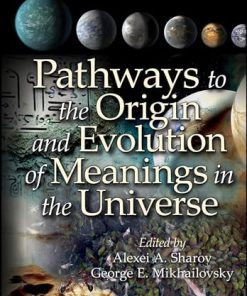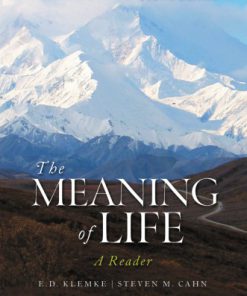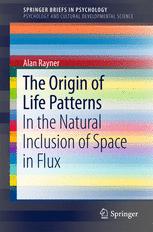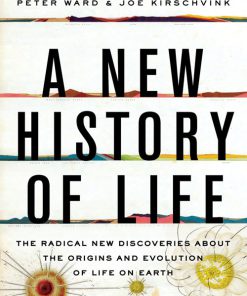The Origin and Nature of Life on Earth The Emergence of the Fourth Geosphere 1st Edition by Eric Smith, Harold Morowitz 1316490730 9781316490730
$50.00 Original price was: $50.00.$25.00Current price is: $25.00.
The Origin and Nature of Life on Earth The Emergence of the Fourth Geosphere 1st Edition by Eric Smith, Harold J. Morowitz – Ebook PDF Instant Download/DeliveryISBN: 1316490730, 9781316490730
Full download The Origin and Nature of Life on Earth The Emergence of the Fourth Geosphere 1st Edition after payment.
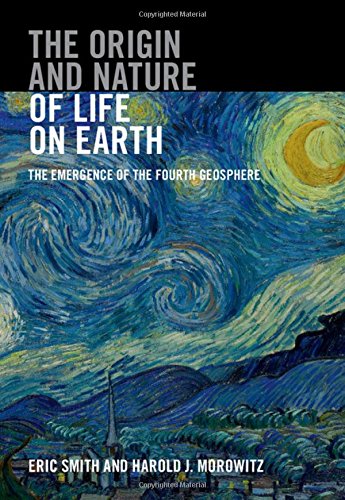
Product details:
ISBN-10 : 1316490730
ISBN-13 : 9781316490730
Author: Eric Smith, Harold J. Morowitz
Uniting the conceptual foundations of the physical sciences and biology, this groundbreaking multidisciplinary book explores the origin of life as a planetary process. Combining geology, geochemistry, biochemistry, microbiology, evolution and statistical physics to create an inclusive picture of the living state, the authors develop the argument that the emergence of life was a necessary cascade of non-equilibrium phase transitions that opened new channels for chemical energy flow on Earth. This full colour and logically structured book introduces the main areas of significance and provides a well-ordered and accessible introduction to multiple literatures outside the confines of disciplinary specializations, as well as including an extensive bibliography to provide context and further reading. For researchers, professionals entering the field or specialists looking for a coherent overview, this text brings together diverse perspectives to form a unified picture of the origin of life and the ongoing organization of the biosphere.
The Origin and Nature of Life on Earth The Emergence of the Fourth Geosphere 1st Table of contents:
1 The planetary scope of biogenesis: the biosphere is the fourth geosphere
1.1 A new way of being organized
1.1.1 Life is a planetary process
1.1.2 Drawing from many streams of science
1.2 The organizing concept of geospheres
1.2.1 The three traditional geospheres
1.2.2 The interfaces between geospheres
1.2.3 The biosphere is the fourth geosphere
1.3 Summary of main arguments of the book
1.3.1 An approach to theory that starts in the phenomenology of the biosphere
1.3.2 Placing evolution in context
1.3.3 Chance and necessity understood within the larger framework of phase transitions
1.3.4 The emergence of the fourth geosphere and the opening of organic chemistry on Earth
1.4 The origin of life and the organization of the biosphere
2 The organization of life on Earth today
2.1 Many forms of order are fundamental in the biosphere
2.1.1 Three conceptions of essentiality
2.1.2 The major patterns that order the biosphere
2.2 Ecosystems must become first-class citizens in biology
2.2.1 No adequate concept of ecosystem identity in current biology
2.2.2 Ecosystems are not super-organisms
2.2.3 Ecological patterns can transcend the distinction between individual and community dynamics
2.3 Bioenergetic and trophic classification of organism-level and ecosystem-level metabolisms
2.3.1 Divergence and convergence: phylogenetic and typological classificationschemes
2.3.2 The leading typological distinctions among organisms
2.3.3 Anabolism and catabolism: the fundamental dichotomy corresponding to the biochemical and ecolo
2.3.4 Ecosystems, in aggregate function, are simpler and more universal than organisms
2.3.5 Universality of the chart of intermediary metabolism
2.4 Biochemical pathways are among the oldest fossils on Earth
2.4.1 Evidence that currently bounds the oldest cellular life
2.4.2 Disappearance of the rock record across the Hadean horizon
2.4.3 Metabolism: fossil or Platonic form?
2.5 The scales of living processes
2.5.1 Scales of biochemistry
2.5.2 Scales of physical organization
2.5.3 Scales of information and control
2.6 Diversity within the order that defines life: the spectrum from necessity to chance
2.6.1 How contingency has been extrapolated from modern evolution to origins
2.6.2 Natural selection for change and for conservation
2.6.3 Different degrees of necessity for different layers
2.7 Common patterns recapitulated at many levels
3 The geochemical context and embedding of the biosphere
3.1 Order in the abiotic context for life
3.1.1 Many points of contact between living and non-living energetics and order
3.1.2 Barriers, timescales, and structure
3.2 Activation energy and relaxation temperature regimes in abiotic chemistry and metabolism
3.3 Stellar and planetary systems operate in a cascade of disequilibria
3.3.1 The once young and now middle-aged Sun
3.3.2 Disequilibria in the Earth are gated by a hierarchy of phases and associated diffusion timesca
3.4 The restless chemical Earth
3.4.1 Mafic and felsic: ocean basins and continental rafts
3.4.2 Three origins of magmas
3.5 The dynamics of crust formation at submarine spreading centers
3.5.1 Melt formation and delivery at mid-ocean ridges
3.5.2 Tension, pressure, brittleness, and continual fracturing
3.5.3 Fractures, water invasion, buoyancy, and the structure of hydrothermal circulation systems
3.5.4 Chemical changes of rock and water in basalt-hosted systems
3.5.5 Serpentinization in peridotite-hosted hydrothermal systems
3.5.6 Principles and parameters of hydrothermal alteration: a summary
3.6 The parallel biosphere of chemotrophy on Earth
3.6.1 The discovery of ecosystems on Earth that do not depend on photosynthetically fixed carbon
3.6.2 The evidence for a deep (or at least subsurface), hot (or at least warm) biosphere
3.6.3 The complex associations of temperature, chemistry, and microbial metabolisms
3.6.4 Major classes of redox couples that power chemotrophic ecosystems today
3.6.5 Why the chemotrophic biosphere has been proposed as a model for early life
3.6.6 Differences between hydrothermal systems today and those in the Archean
3.6.7 Feedback from the biosphere to surface mineralogy
3.7 Expectations about the nature of life
4 The architecture and evolution of the metabolic substrate
4.1 Metabolism between geochemistry and history
4.2 Modularity in metabolism, and implications for the origin of life
4.2.1 Modules and layers in metabolic architecture and function
4.2.2 Reading through the evolutionary palimpsest
4.2.3 Support for a progressive emergence of metabolism
4.2.4 Feedbacks, and bringing geochemistry under organic control
4.2.5 The direction of propagation of constraints: upward from metabolism to higher-level aggregate
4.3 The core network of small metabolites
4.3.1 The core in relation to anabolism and catabolism
4.3.2 The core of the core
4.3.3 Precursors in the citric acid cycle and the primary biosynthetic pathways
4.3.4 One-carbon metabolism in relation to TCA and anabolism
4.3.5 The universal covering network of autotrophic carbon fixation
4.3.6 Description of the six fixation pathways
4.3.7 Pathway alignments and redundant chemistry
4.3.8 Distinctive initial reactions and conserved metal-center enzymes
4.3.9 The striking lack of innovation in carbon fixation
4.4 A reconstructed history of carbon fixation, and the role of innovation constraints in history
4.4.1 Three reasons evolutionary reconstruction enters the problem of finding good models for early
4.4.2 Phylogenetic reconstruction of functional networks
4.4.3 Functional and comparative assignment of biosynthetic pathways in modern clades
4.4.4 A maximum-parsimony tree of autotrophic carbon-fixation networks
4.4.5 A reconstruction of Aquifex aeolicus and evidence for broad patterns of evolutionary direction
4.4.6 The rise of oxygen and the attending change in metabolism and evolutionary dynamics
4.4.7 Chance and necessity for oxidative versus reductive TCA
4.5 Cofactors and the first layer of molecular-organic control
4.5.1 The intermediate position of cofactors, feedback, and the emergence of metabolic control
4.5.2 Key cofactor classes for the earliest elaboration ofmetabolism
4.5.3 The complex amino acids as cofactors
4.5.4 Situating cofactors within the elaboration of the small-molecule metabolic substrate network
4.5.5 Roles of the elements and evolutionary convergences
4.6 Long-loop versus short-loop autocatalysis
4.7 Summary: continuities and gaps
4.8 Graphical appendix: definition of notations for chemical reactionnetworks
4.8.1 Definition of graphic elements
5 Higher-level structures and the recapitulation of metabolic order
5.1 Coupled subsystems and shared patterns
5.1.1 Shared boundaries: correlation is not causation
5.1.2 Different kinds of modularity have changed in different directions under evolution
5.2 Metabolic order recapitulated in higher-level aggregate structures
5.3 Order in the genetic code: fossils of the emergence of translation?
5.3.1 Context for the code: the watershed of the emergence oftranslation
5.3.2 The modern translation system could be a firewall
5.3.3 What kinds of information does a pattern contain, andhow much?
5.3.4 Part of the order in the code is order in the amino acid inventory
5.3.5 Four major forms of metabolic order in the code
5.3.6 Rule combinations
5.3.7 Accounting for order
5.3.8 A proposal for three phases in the emergence of translation
5.4 The essential role of bioenergetics in both emergence and control
5.4.1 Energy conservation, energy carriers, and entropy
5.4.2 Three energy buses: reductants, phosphates, and protons
5.4.3 The cellular energy triangle
5.4.4 Geochemical context for emergence of redox and phosphate energy systems
5.5 The three problems solved by cellularization
5.5.1 Distinct functions performed by distinct subsystems
5.5.2 An exercise in transversality
5.6 The partial integration of molecular replication with cellular metabolism
5.7 Cellular life is a confederacy
6 The emergence of a biosphere from geochemistry
6.1 From universals to a path of biogenesis
6.1.1 On empiricism and theory: evaluating highly incompletescenarios
6.1.2 The functions versus the systems chemistry of RNA
6.1.3 An emergent identity for metabolism or the emergence of a control paradigm?
6.2 Planetary disequilibria and the departure toward biochemistry
6.2.1 The partitioning role of the abiotic geospheres
6.2.2 Species that bridge geosphere boundaries to form the great arcs of planetary chemical disequil
6.2.3 Mineral-hosted hydrothermal systems are pivotal in the sense that they are key focusing center
6.2.4 The alkaline hydrothermal vents model
6.3 Stages in the emergence of the small-molecule network
6.3.1 Carbon reduction and the first C-C bonds
6.3.2 rTCA: the potential for self-amplification realized and the first strong selection of the meta
6.3.3 Reductive amination of -ketones and the path to amino acids
6.3.4 A network of sugar phosphates and aldol reactions
6.4 The early organic feedbacks
6.4.1 C-N heterocycles
6.4.2 Cyclohydrolase reactions: purine nucleotides and folates
6.4.3 Thiamin-like chemistry: lifting rTCA off the rocks
6.4.4 Biotin: uses in rTCA and in fatty acid synthesis
6.4.5 Alkyl thiols
6.5 Selection of monomers for chirality
6.5.1 Degree of enantiomeric selection at different scales
6.5.2 Mechanisms and contexts for stereoselectivity
6.5.3 The redundancy of biochemical processes simplifies the problem of chiral selection
6.6 The oligomer world and molecular replication
6.6.1 Increased need for dehydrating ligation reactions
6.6.2 Coupling of surfaces and polymerization
6.6.3 Distinguishing the source of selection from the emergence of memory in a ribozyme-catalyzed er
6.7 Transitions to cellular encapsulation in lipids
6.7.1 Contexts that separate the aggregate transformation into independent steps
6.8 The advent of the ribosome
6.8.1 The core and evolution of catalysis
6.8.2 Catalytic RNA and iron
6.8.3 The origin of translation and the three-base reading frame
6.8.4 Reliable translation and the birth of phylogeny
6.9 The major biogeochemical transitions in the evolutionary era
6.10 Tentative conclusions: the limits of narrative and the way forward
7 The phase transition paradigm for emergence
7.1 Theory in the origin of life
7.1.1 What does a phase transition framing add to the search for relevant environments and relevant
7.2 Arriving at the need for a phase transition paradigm
7.2.1 Why there is something instead of nothing
7.2.2 Selecting pattern from chaos in organosynthesis
7.2.3 The phase transition paradigm
7.2.4 Developing the stability perspective
7.2.5 A chapter of primers
7.3 Large deviations and the nature of thermodynamic limits
7.3.1 The combinatorics of large numbers and simplified fluctuation-probability distributions
7.3.2 Interacting systems and classical thermodynamics
7.3.3 Statistical roles of state variables
7.3.4 Phase transitions and order parameters
7.4 Phase transitions in equilibrium systems
7.4.1 Worked example: the Curie–Weiss phase transition
7.4.2 Reduction, emergence, and prediction
7.4.3 Unpredictability and long-range order
7.4.4 The hierarchy of matter
7.4.5 Parallels in matter and life: the product space of chemicalreactions
7.4.6 Oil and water
7.5 The (large-deviations!) theory of asymptotically reliable errorcorrection
7.5.1 Information theory as a mirror on thermodynamics
7.5.2 The large-deviations theory of optimal error correction
7.5.3 Transmission channel models
7.5.4 Capacity and error probability
7.5.5 Error correction and molecular recognition in an energeticsystem
7.5.6 The theory of optimal error correction is thermodynamic
7.5.7 One signal or many?
7.6 Phase transitions in non-equilibrium systems
7.6.1 On the equilibrium entropy and living systems
7.6.2 Ensembles of processes and of histories
7.6.3 Phase transfer catalysis
7.6.4 A first-order, non-equilibrium, phase transition in the context of autocatalysis
7.6.5 The lightning strike analogy
7.6.6 Conclusion: the frontier in the study of collective and cooperative effects
7.7 Technical appendix: non-equilibrium large-deviations formulae
7.7.1 Master equation for the one-variable model of autocatalysis
7.7.2 Ordinary power-series generating function and Liouvilleequation
7.7.3 Escape trajectories and effective potential for non-equilibrium phases
7.7.4 Gaussian fluctuations about stationary-path backgrounds
8 Reconceptualizing the nature of the living state
8.1 Bringing the phase transition paradigm to life
8.1.1 Necessary order in the face of pervasive disturbance
8.1.2 The role of phase transitions in hierarchical complex systems
8.1.3 How uniqueness becomes a foundation for diversity
8.1.4 Beyond origins to the nature of the living state
8.2 Metabolic layering as a form of modular architecture
8.2.1 Herbert Simon’s arguments that modularity is prerequisite to hierarchical complexity
8.2.2 The modularity argument in a dynamical setting
8.2.3 Error correction from regression to ordered thermal states
8.2.4 The universal metabolic chart as an order parameter
8.2.5 The use of order parameters in induction
8.2.6 Control systems and requisite variety
8.2.7 Biology designs using order parameters
8.3 The emergence of individuality
8.3.1 Darwinian evolution is predicated on individuality
8.3.2 How unique solutions give rise to conditions thatsupport diversity
8.3.3 The nature of individual identity
8.3.4 Individuality within the structure of evolutionary theory
8.3.5 The ecosystem as community and as entity
8.3.6 Why material simplicity precedes complexity in the phase transition paradigm
8.4 The nature of the living state
8.4.1 Replicators: a distinction but not a definition
8.4.2 Life is defined by participation in the biosphere
8.4.3 Covalent chemistry flux and other order parameters
8.4.4 The importance of being chemical
8.5 The error-correcting hierarchy of the biosphere
8.5.1 The main relation: a general trade-off among stability, complexity, and correlation length
8.5.2 Simple and complex phase transitions
8.5.3 Living matter as active data
8.5.4 Patterns and entities in the biosphere
People also search for The Origin and Nature of Life on Earth The Emergence of the Fourth Geosphere 1st:
beginnings of life on earth
the origin and nature of life
earth’s beginnings the origins of life
the emergence of life on earth
the emergence of life
Tags: The Origin, Nature, The Emergence, Fourth Geosphere, Eric Smith, Harold Morowitz
You may also like…
Politics & Philosophy - General & Miscellaneous Philosophy
Politics & Philosophy - General & Miscellaneous Philosophy
Žižek and his Contemporaries On the Emergence of the Slovenian Lacan Jones Irwin
Politics & Philosophy - Social Sciences
Politics & Philosophy - General & Miscellaneous Philosophy
The meaning of life 4th Edition by Klemke, Steven Cahn ISBN 0190674199 9780190674199
Animals & Pets - Dinosaurs
Science (General)
Biology and other natural sciences - Paleontology
Relationships & Lifestyle - Psychological Self-Help




